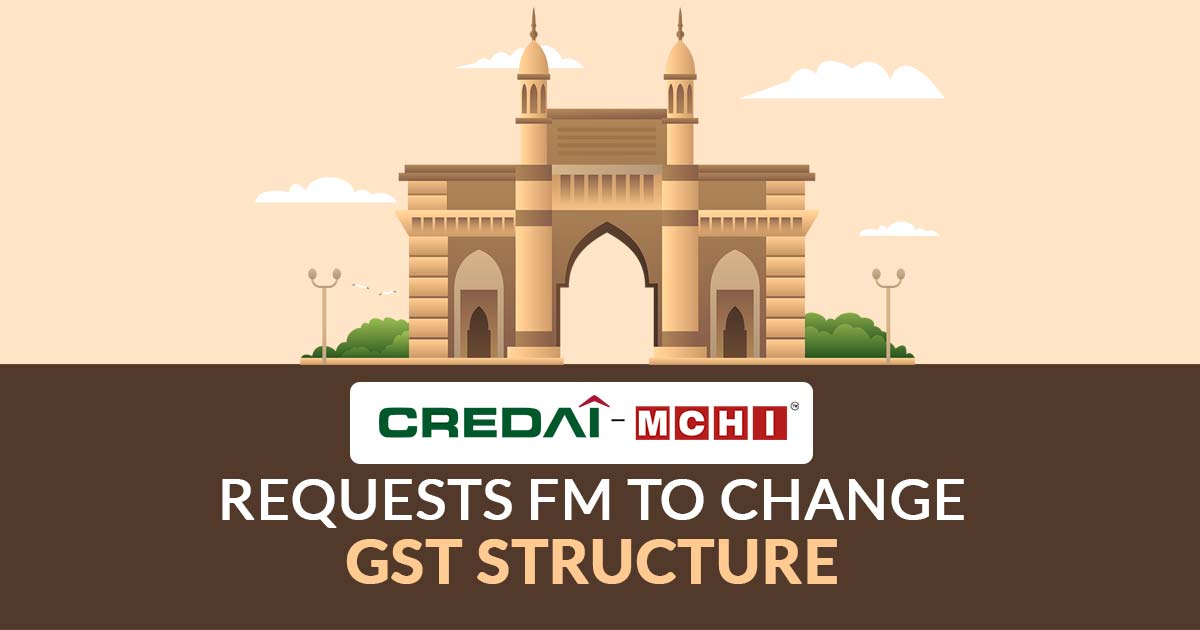
The Ministry of Finance has been approached by the Real estate developers for the subject of the impact of GST charged on the rehabilitation apartments that has developed and given back, at no cost, to existing occupants under the portion of redevelopment projects.
The Confederation of Real Estate Developers’ Association of India (CREDAI) – MCHI, has written to Finance Minister Nirmala Sitharaman seeking an amendment in GST structure to ensure the feasibility of redevelopment projects in the Mumbai Metropolitan Region (MMR).
Mumbai’s property market is dominated by reconstruction and rehabilitation-related real estate projects because there aren’t many empty lots in the land-scarce metropolis. Approximately 19,000 properties in the city are now vacant and awaiting redevelopment.
Boman Irani, President, of CREDAI National mentioned that “The Mumbai Metropolitan Region is one of the most valuable real estate markets in India. However, it must be noted that a conducive redevelopment eco-system is required for the region to fully realize its potential, as there are numerous dilapidated buildings with roughly 50% of the population still residing in the slums or old, dilapidated buildings,”
Read Also: Impact of GST on Real Estate Sector in India
To make a formal representation of the case, the Irani including additional members of CREDAI MCHI met the finance minister.
Irani claims that although the government has taken steps to encourage additional redevelopment projects, there are still certain regulatory and taxation-related issues that need to be addressed. In the long term, this will not only assist increase economic value but also enable supply and demand for such initiatives, which often target low- and middle-income populations and serve the needs of a crowded metropolis.
The Development Control and Promotion Regulation (DCPR) 2034 governs redevelopment laws in the Mumbai region and supports such projects with a higher floor space index (FSI). However, the developers’ association feels that the GST paid on the same negates the aim of rehabilitating existing tenants and increasing real estate value because it jeopardizes the financial viability of countless projects.
Read Also: Real Estate Agents Want GST Rationalisation on Under-construction Projects to Boost Sales
The sale of flats, shops, and offices on the open market and the provision of new homes for existing residents, renters, flat owners, and slum dwellers are now seen as different transactions with greater tax liabilities.
According to CREDAI, existing residents, slum residents, tenants, and flat owners receive their apartments free of charge. As a result, GST is not required when there is no consideration.
Currently, 10% GST is applied to apartments that are sold from the selling component, with the final consumers bearing the costs of 5% of the rehab and 5% of the sale.
Due to increasing GST expenses, the economics of redevelopment projects, a form of urban real estate regeneration approach in which real estate players take over old buildings and reconstruct them, are encountering issues.
Because the cost of construction of the rehabilitation component is already included in the cost of sale, taxing both rehab and sale separately would result in double taxation. The sale component is provided for GST, and therefore the value of rehabilitation construction is likewise offered for GST, according to the developers’ association.
Additionally, it was argued that building the rehabilitation component is an input service necessary for building the selling component, which is the output service.
The future purchasers of the selling component of projects that can handle the higher GST burden bear the same when the price of their flats rises. The existing tenants or slum dwellers suffer as a result of the project’s inability to absorb the increased cost imposed by the GST on renovation at notional values, the developers’ group noted.









